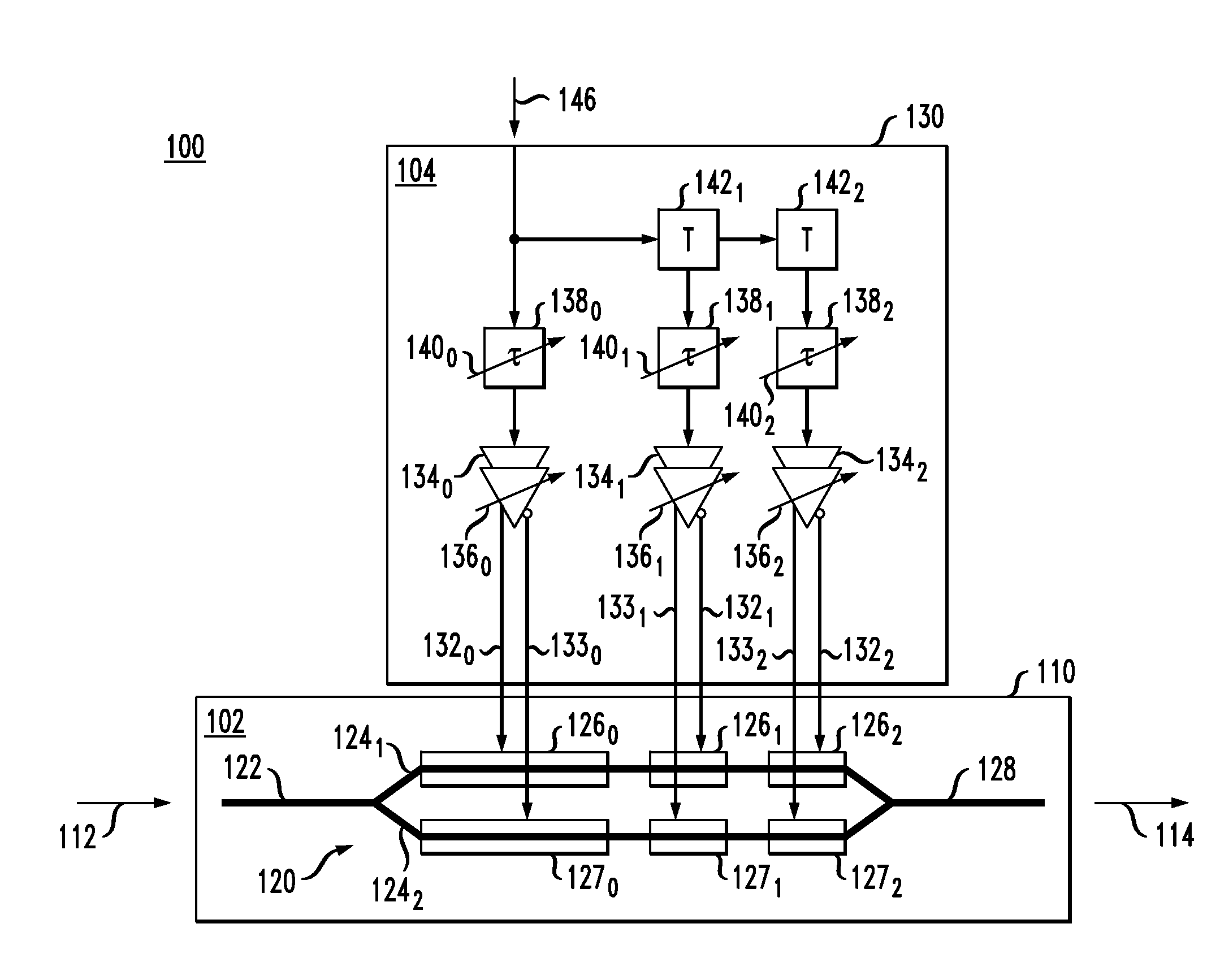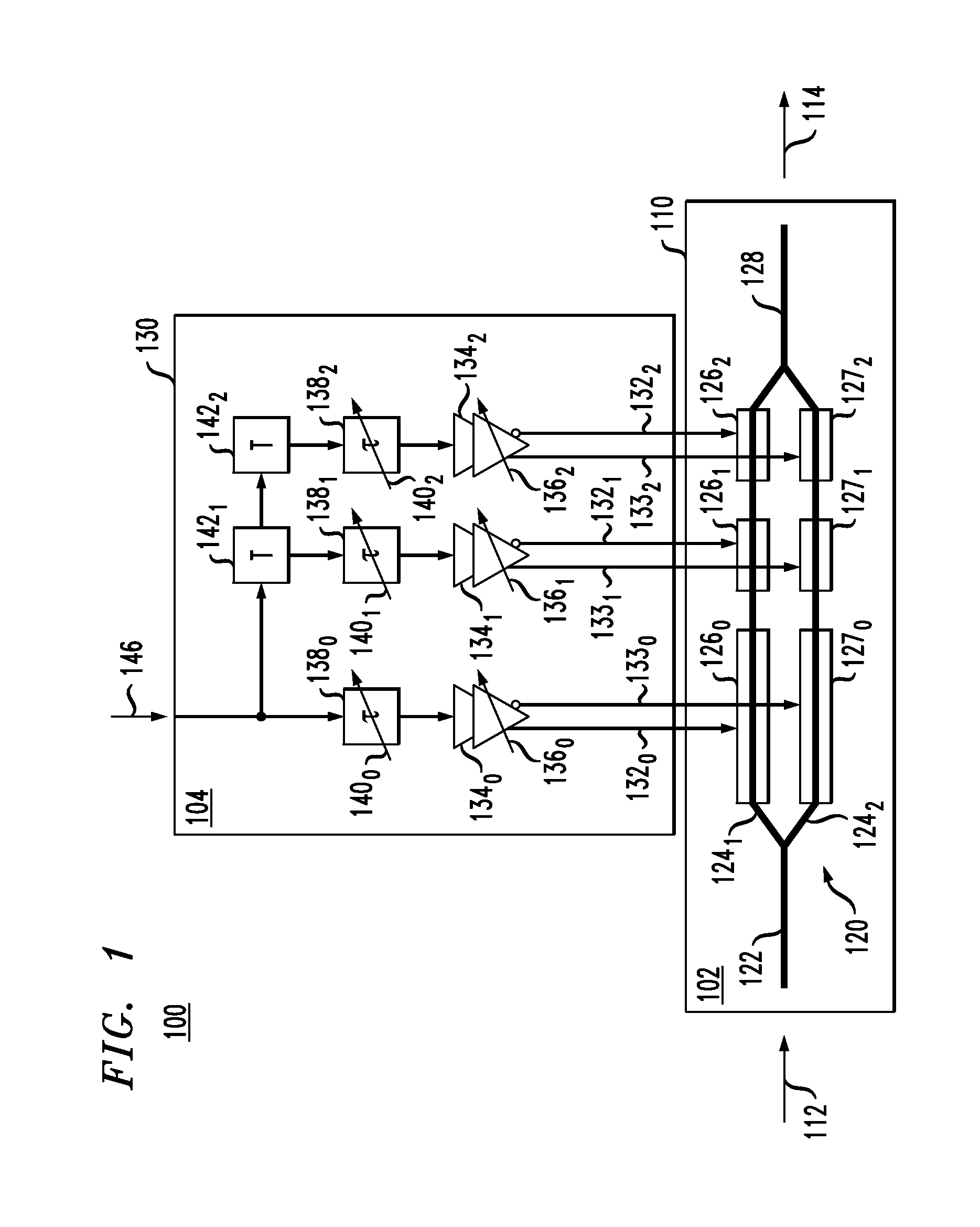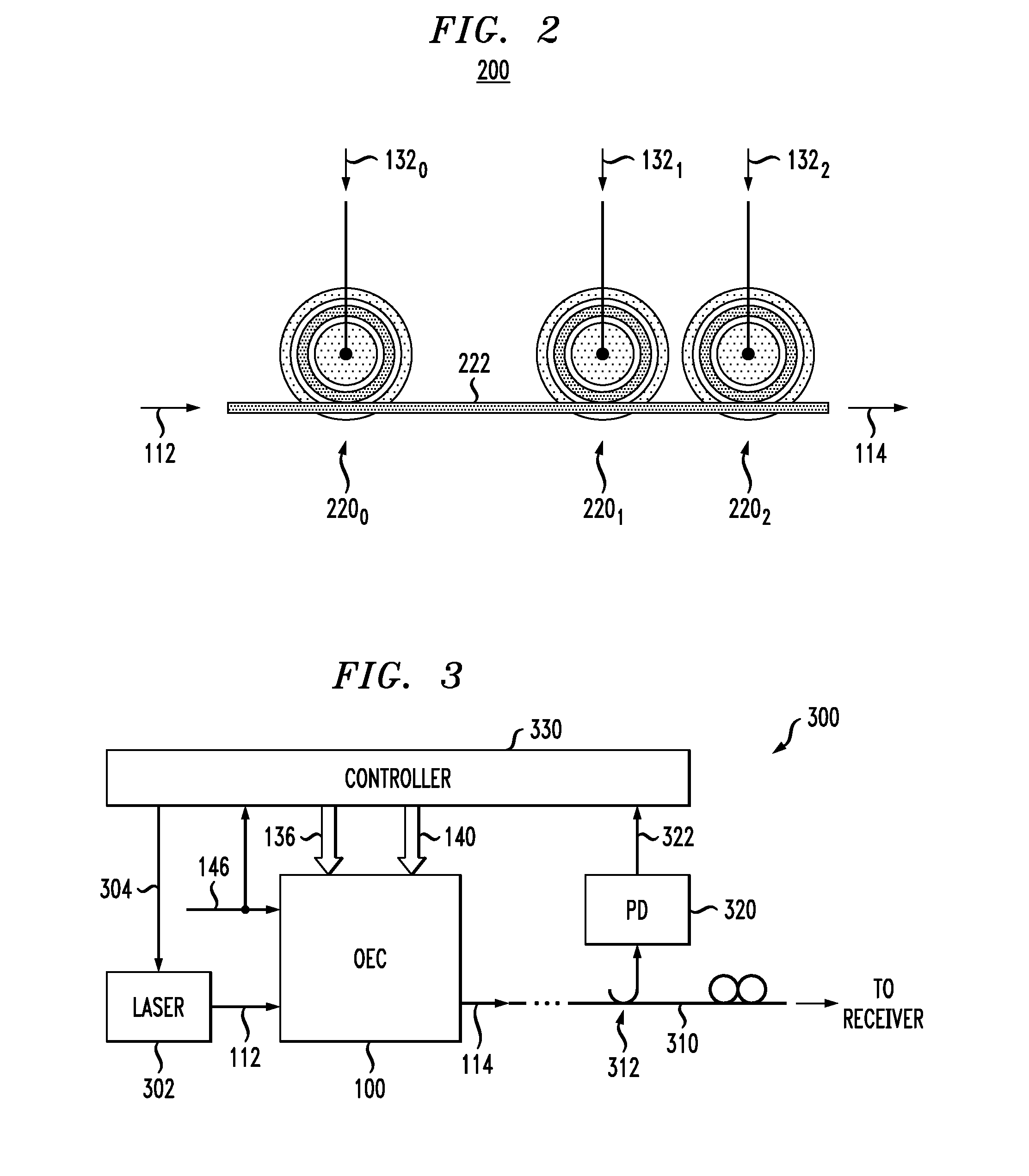Filter structure for driving an optical modulator
a filter structure and optical modulator technology, applied in the field of optical communication equipment, can solve the problems of insufficient development of commercially viable pic solutions aimed at high-speed (e.g., >100 gbit/s) optical transport at low-cost, low-power, and high element-integration density
- Summary
- Abstract
- Description
- Claims
- Application Information
AI Technical Summary
Benefits of technology
Problems solved by technology
Method used
Image
Examples
Embodiment Construction
[0006]Disclosed herein are various embodiments of an opto-electronic circuit having an optical modulator and a driver circuit configured to generate a plurality of electrical drive signals for the optical modulator in a manner that causes the opto-electronic circuit to operate as a finite-impulse-response (FIR) filter. Different electrical drive signals generated by the driver circuit represent different taps of the FIR filter and are individually applied to different respective electrodes in the optical modulator without first being combined with one another prior to said individual application. The optical modulator represents an adder of the FIR filter and is configured to use the applied electrical drive signals to perform signal summation in the optical domain, thereby alleviating some of the limitations associated with the electrical RF circuitry used in the driver circuit. In various embodiments, the opto-electronic circuit can be employed in optical transmitters, equalizers,...
PUM
 Login to View More
Login to View More Abstract
Description
Claims
Application Information
 Login to View More
Login to View More - R&D
- Intellectual Property
- Life Sciences
- Materials
- Tech Scout
- Unparalleled Data Quality
- Higher Quality Content
- 60% Fewer Hallucinations
Browse by: Latest US Patents, China's latest patents, Technical Efficacy Thesaurus, Application Domain, Technology Topic, Popular Technical Reports.
© 2025 PatSnap. All rights reserved.Legal|Privacy policy|Modern Slavery Act Transparency Statement|Sitemap|About US| Contact US: help@patsnap.com



